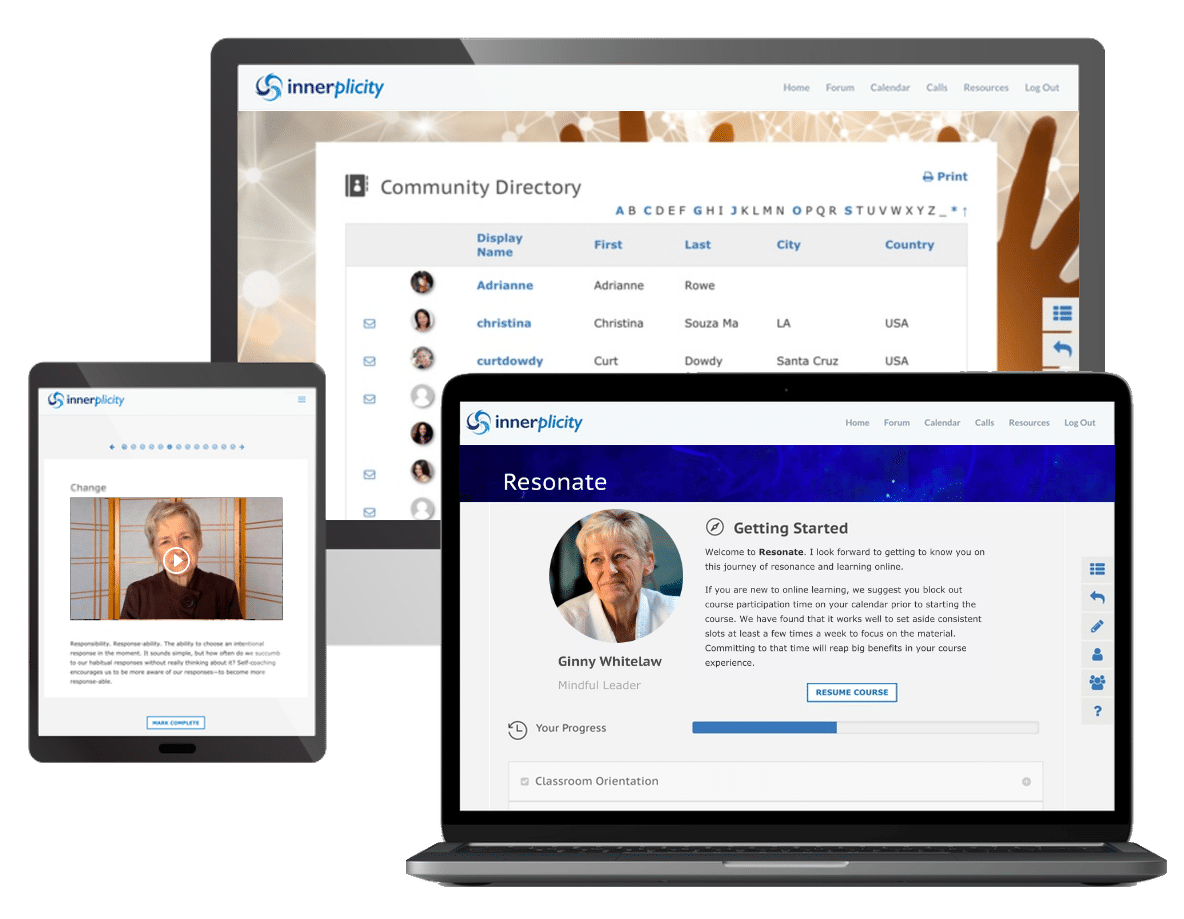
Working and Meeting Remotely?
– 4 min –
YOU BETTER DO THIS
At first, we may have thought this working from home stuff was a pandemic adaptation. But the added flexibility felt by many, and the reduced cost of travel and office overhead welcomed by their organizations, are making hybrid and remote forms of working here to stay. Plus, many of us have been forced to do it long enough so that our habits have changed. In my world, a meeting now means an online call. A program now means an online rhythm of plenary and breakout sessions on Zoom. We are interviewing, hiring, coaching, teaching, mediating, celebrating, influencing and collaborating with people we rarely or never meet in person. For many of us, making our difference increasingly happens remotely.
Technology and learning platforms like Interplicity are wonderful for helping to close the distance. But there’s also something we need to do that no technology can do for us if we want to get on the same wavelength with people when we’re not in the same room. Namely, we need to be more intentional about getting a feel for their condition and context.
As Guy Claxton recounts in Intelligence in the Flesh, we as social animals are loaded with social circuitry and get a feel for others by making internal maps of them in our own nervous system. We do this through subtle mimicry and gestures that create a whole dance underlying a connected, in-person conversation. We also take in their energy through multiple senses – how they look, sound, smell – and overall “vibe”, which is a sense of the field around them. Finally, when we’re in the same physical place at the same time, there’s at least some common context we can take for granted.
Much of that changes at a distance. Sight and sound are thinner signals. Smell is virtually non-existent. Something of the person’s vibe is picked up, which I found a pleasant surprise as we moved our Zen meditation and Zen Leadership training online in the past year. But sensing that vibe takes greater attention and attunement. It’s not something one can do in a multi-tasking hurry. Moreover, we cannot take anything for granted when it comes to context. We may be sitting in a quiet office in the fresh air of morning while the person we’re talking to is juggling interruptions from their phone, noise from the neighbors, and an evening scramble with two pre-school kids.
So, what can we do?
We have a phrase that we use in the Resonate course for how we help others or get them moving with us: “Become the other; go from there”. We do well to open each conversation with a few minutes of feeling into the reality of the other person that we can, as accurately as possible, “become the other”. For example, it’s common to open a conversation with some version of “how are you?” But this is often a throw-away line, met with the perfunctory response “fine, how are you?” In the remote environment, we need to get beneath “fine”. So don’t breeze past this opening, but rather attend to it with deep listening, sensitive questions, and sharing what’s real for you if the other person is interested. Of course, we can’t force them to make an inner map of us, but the more sincerely and accurately we make one of them, the more likely we are to be skillful in the conversation. And the more likely the two of us are to resonate as one.
Similarly, in team meetings and larger groups, we need a way to get on the same wavelength. We may not be able to speak as deeply as in a one-on-one conversation, but it’s still important to get a sense of where people are starting from and give them a way to come together. For example, in online meetings of a dozen or so people, you might pass a simple talking piece from window to window, and have each person check in on how they are and answer a focusing question relevant to the meeting. In larger groups, you can break them into smaller groups of five to six and have each group bring back a summary around the focusing question. You might open a meeting by taking a few deep, slow breaths together, which is a simple, physical way to invite a common frequency across the group. If you want to get more comfortable with these and other connecting practices, the Resonate course will help you.
As the world of work moves more online for more people, the leaders who know how to close the distance will make the greatest difference. May you be one of them.
Ginny Whitelaw, Author & CEO, Institute for Zen Leadership
A biophysicist and former senior manager for integrating NASA’s International Space Station, Dr. Whitelaw has trained leaders on the path of making a difference for more than 25 years, working with mind, body, energy and resonance through the Institute for Zen Leadership. Learn more »
Trending
600 Million Breaths
- 5 min - It was a beautiful summer night in Chicago. Hot during the day but, once the sun...
Where Do You Resonate Amidst All the Chaos?
- 3 min - People are struggling today with a deep sense of disruption. We are facing a world of...
Why Is This Happening “For” Me?
- 2 min -We all face unwanted challenges in our life from time to time. And as a coach, as you...
600 Million Breaths
- 5 min - It was a beautiful summer night in Chicago. Hot during the day but, once the sun...
Where Do You Resonate Amidst All the Chaos?
- 3 min - People are struggling today with a deep sense of disruption. We are facing a world of...
FEATURED COURSE
Resonate
Expect to be surprised by the joy, resilience and “effortless effort” of working with resonance in real-life applications from a challenge you’re facing, to strengthening a relationship, to leading change in a team or system.
To Be Announced
Instructor-Led Course
6-Weeks Online
9hrs Est. Course time



